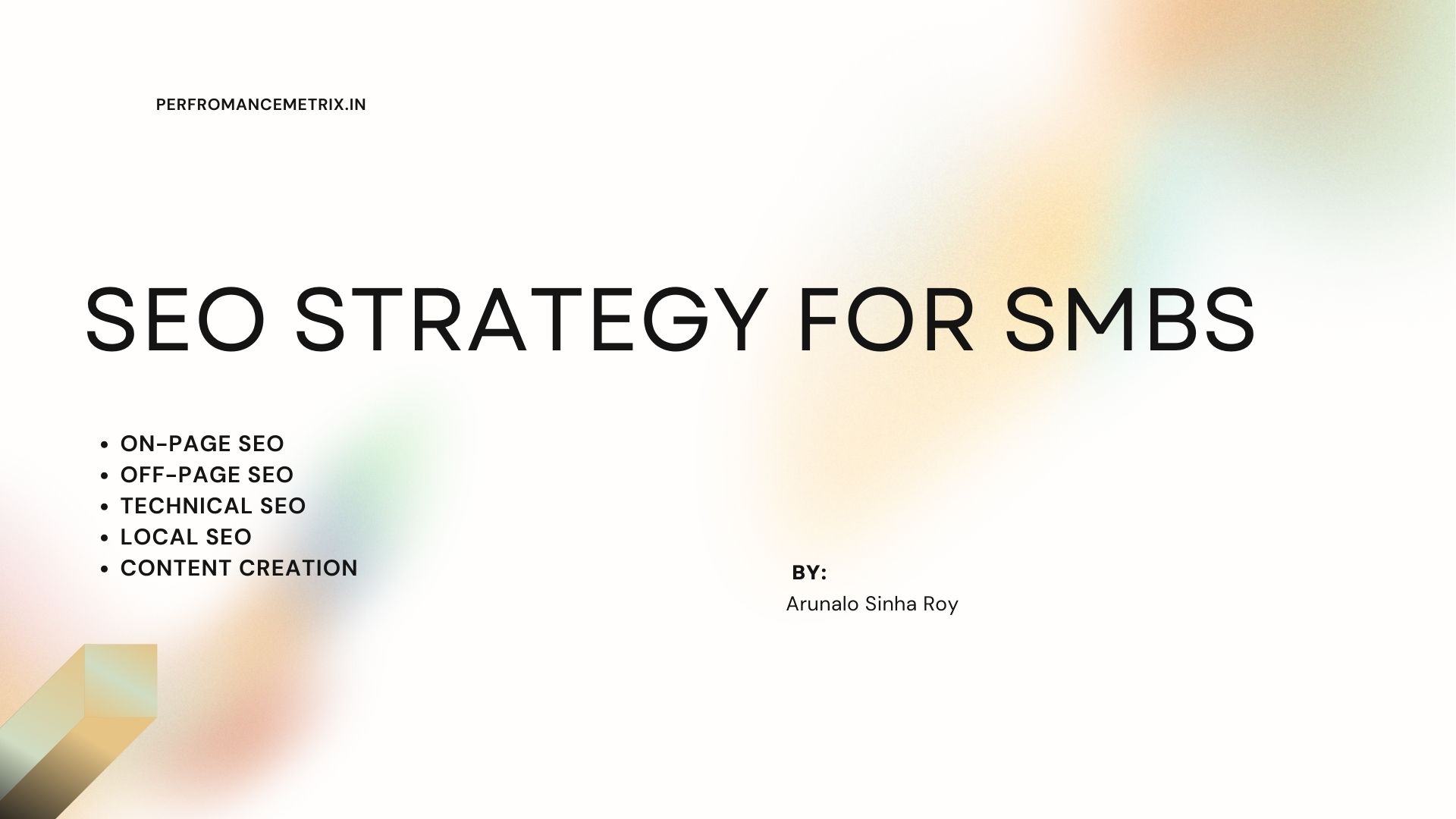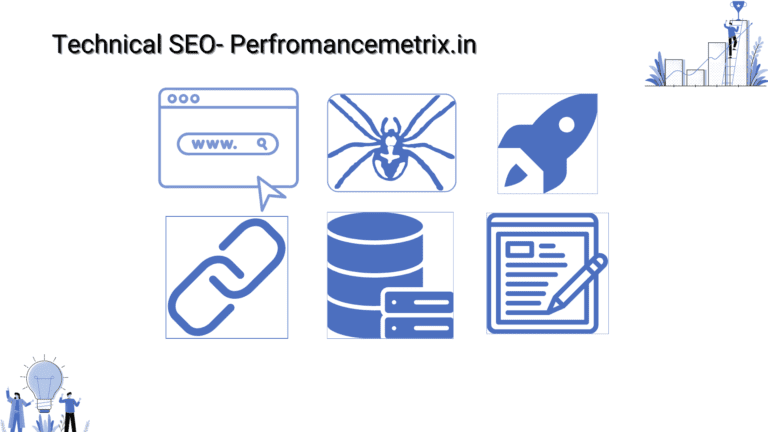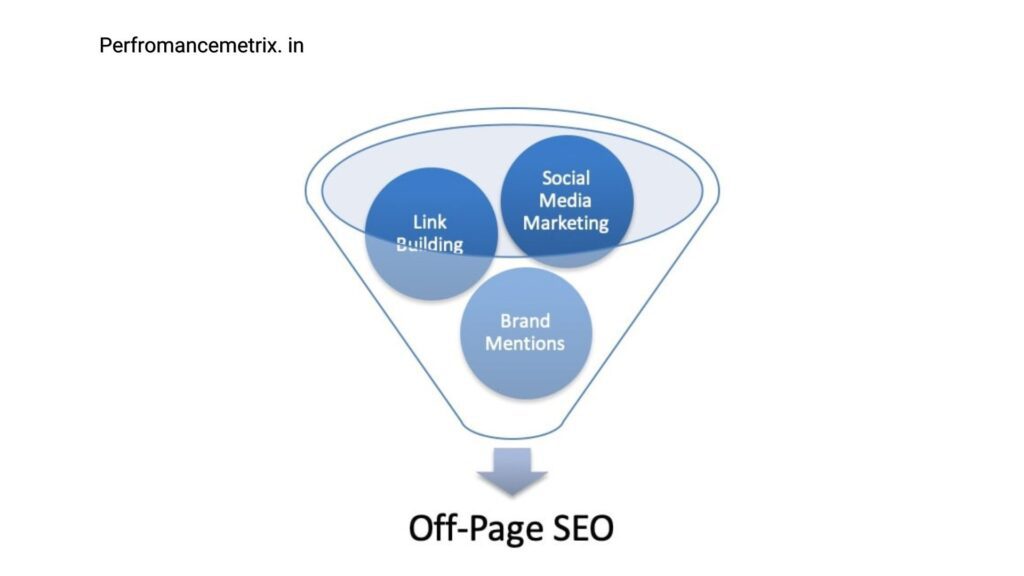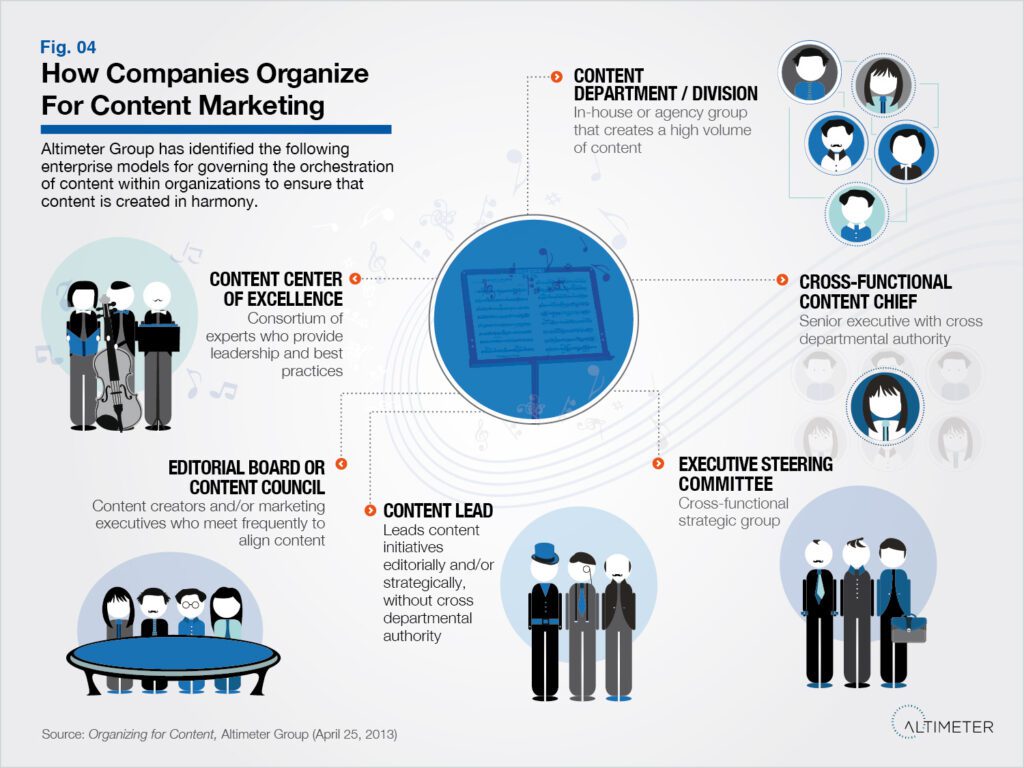
Creating a comprehensive SEO strategy for a new business involves a multi-faceted approach that covers various aspects of SEO, including on-page, off-page, technical SEO, local SEO, and content creation. Here is how a new business can leverage the power of SEO to build a strong social media presence. Performancemetrix.in
Chapters
- Technical SEO
- On page SEO and Content creation
- Off Page SEO
- Local SEO
- Monitoring And Analytics
- On Going Optimization
1. Technical SEO

Technical SEO is a vast field and it requires more a lot of technical knowledge like Website Speed optimization, coding, design and layout optimization, and many more
Website Speed: Ensure fast loading times by optimizing images, using a content delivery network (CDN), and minimizing unnecessary scripts. You have to check through Google search console for any kind of server or website errors like 4xx,5xx . The less technical error your website will have the more chances are there to get a good ranking in Google Search Results
Mobile responsive design and AMP : Ensure the website is mobile-friendly and responsive. Using AMP(Accelerated Mobile Page) can help your website to rank fast
Site Structure: Create a clear and organized site structure with logical navigation. Consider using Content clustering method
XML Sitemap: Create and submit XML sitemaps to search engines. Whenever you are making any major changes to your website , consider submitting XML Sitemap . Use GSC(Google Search Console) to submit your sitemap
Robots.txt: Ensure proper use of the robots.txt file to control crawler access.
Schema Markup: Implement schema markup to enhance search engine understanding of your content.
SSL Certificate: Ensure your site has an SSL certificate for security and improved search rankings. Goole nowadays shows a warning if you open a website which do not have any SSL certificate.
In addition Consider using simple URL and Slug so that users and search engine can easily understand your website and content
2. On page SEO and Content creation
On page SEO in one of the most crucial parts of SEO. Modern day SERP ranking requires a strong content strategy. Google tries to serve consumer queries centric content. If you want your home page to be ranked in the top, that will be a very tough job , as most of the home pages do not serve queries. And for that now a day, you can see a lot of Blogs ,Blog pages , and videos are started to appear on the first page of SERP .
So, diving into the ON- Page SEO strategy, there are several factors you have to consider while doing On-Page SEO for a website
Keyword Research: Identify relevant keywords for your business using tools like Google Keyword Planner and SEMrush. Use mix keyword strategy which will include Long Tail and Short tail keyword.
Content creation: Create content which users will read. How to content, Guide content this type of content usually attracts users as this type of content offers some kind of solutions to users’ problems. If your content offers what an user is looking, Google will rank you. Keyword stuffing doesn’t work and often Google penalize such contents. Take help form A.I Tools to generate content but keep in mind, you have to create the A.I generated content in such way that user can find solution by reading it. Also consider creating YouTube videos, short form of content and use it in your article to provide clear solutions.
Meta Tags: Optimize meta titles and descriptions with relevant targeted keywords. Use copywrting techniques to create eye catchy Meta Title and Descriptions. Use A.I Software like Chatgpt or CopyAI to generate creative headlines and Descriptions.
Header Tags: Use H1, H2, and H3 tags to structure content. This gives clear structure in your content.
Keyword Placement: Incorporate target keywords naturally within content.
Content Optimization: Ensure high-quality, relevant, and engaging content on each page. Consider using Internal Links and External Links
Internal Linking: Link relevant pages within your site for better navigation and SEO.
Image Optimization: Optimize image alt tags and file names.
User Experience (UX): Enhance user experience with a focus on readability, formatting, and mobile-friendliness.
3. Off-Page SEO:
Off page SEO refers to the process takes outside of a website to improve its ranking and search presence. It helps in increase Domain Ranking, SERP presence, DA and PA .
Usually strategies like Guest posting, Social media referral and outreach program comes under OFF-Page SEO

Link Building: Build high-quality backlinks through outreach, guest posting, and content promotion. Things to keep in mind, strategies like Black Hat SEO doesn’t work. Google has strict policies and will penalize your website for using such strategies. White Hat SEO strategies like Guest Posting, Blog submission, Outreach Program can help you in growth of your website.
Social Media: Create and maintain a strong social media presence to amplify content and engage with your audience.
Online Reputation Management: Monitor and manage online reviews and mentions.
4. Local SEO and NAP Citation:
Google My Business (GMB): Claim and optimize your GMB listing with accurate business information, photos, reviews and keywords
Local Citations: Build consistent NAP (Name, Address, Phone number) citations across local directories and websites.
Local Content: Create content targeting local keywords and topics relevant to your audience.
Local Link Building: Build local backlinks from reputable local businesses and directories.
NAP Citation – NAP-Name , Adress and Phone NO , If Google finds contact information(NAP) of your Businesses across the web, Google will help your Google My business profile to rank on the top 3 of Local Listings.
5. Content Creation:
Content creation is the most crucial part in a SEO strategy and also from business perspective. Modern day relies on valid information. Let’s say you want to buy a phone. In past people usually visits a local store to buy a phone without considering in depth research. Now you will check YouTube , compare other phones with your desired phone, read blogs about it, check customer review and after that you will come to a conclusion. So, for all these steps you need content. That is what Google has introduced E-E-A-T frame work in their algorithm. E-E-A-T means Experience, Expertise , Authoritativeness and Trust.
Now a days, just making a blog and stuffing keyword in it wont rank your website. You information must be from a very trustworthy source and will match with E-E-A-T framework.
Now coming to the important types in Content creation –

Blog: Develop Blogs, YouTube Videos, Social media posts , reels with valuable, informative, and shareable content related to your industry.
Content Calendar: Create a content calendar to plan and schedule regular updates.
Content Promotion: Share content on social media, through email marketing, and with outreach to relevant influencers.
Multimedia Content: Diversify content with videos, infographics, and podcasts to reach different audiences.
6. Dig deep into Marketing Analytics
Marketing is the perfect blend of Art and Science , and no matter what you do, without measuring your work , end results will create chaos. Measuring DATA and taking steps according to that DATA is very crucial. You can start from basic by using free tools like
Google Analytics: Set up and regularly review Google Analytics to track website performance.
Google Search Console: Monitor for issues, submit sitemaps, and review search queries.
Google Tag Manager: Use Tag Manager to set up multiple tags in your website
Rank Tracking: Use SEO tools to track keyword rankings and monitor competitors. Like Semrush , Ubersuggest
Remember that SEO is an ongoing process, and results may take time to materialize. Consistency, patience, and adaptability are key to a successful SEO strategy. Regularly review and update your strategy to stay competitive in the ever-evolving search landscape. Monitor every steps and competitors, use A.I tools , keep track of Google’s Algorithm updates.
To save you from this whole complicated time-consuming process, I am here to help.
